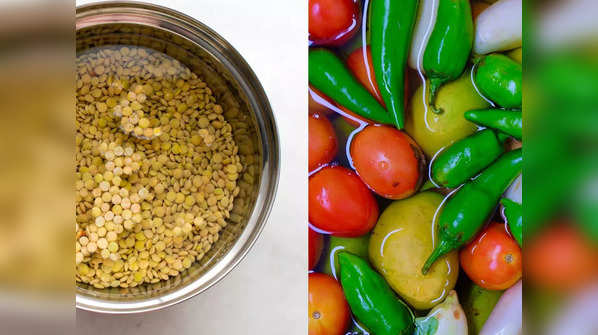6 Foods that must be soaked before consumption

6 Foods that must be soaked before consumption
The food you eat can make or break your health, and this is why consuming foods in the right way is essential for reaping the benefits of these foods. However, there are times when we end up eating certain foods raw to save time and effort, but you will be surprised to know that there are certain common foods that should never be consumed raw. Here’s all you need to know about soaking foods and why it is important to soak these foods before eating.

Why is it important to soak certain foods before cooking?
Soaking certain foods before consumption is a traditional practice that enhances their nutritional value, digestibility, and overall health benefits. This process can help break down anti-nutrients, reduce toxins, and improve absorption of essential vitamins and minerals. Here’s a list of six foods that are better soaked before eating, along with the reasons why.

Nuts and seeds
Nuts and seeds, for example, almonds, walnuts, chia seeds, and flaxseeds, contain phytic acid, an anti-nutrient; it is reported that phytic acid will block several major minerals intake, like iron, zinc, and calcium. Soaking overnight reduces the level of phytic acid in these nuts and seeds, hence enhancing digestibility, which increases the uptake of nutrients. It also softens the texture, thus making it more palatable and much easier to chew.

Raw vegetables
Raw cruciferous vegetables, such as broccoli, cabbage, and cauliflower, contain goitrogens and some other compounds that, if eaten in large quantities, tend to interfere with the absorption of iodine, causing problems for the thyroid. Most of these generally disappear when the vegetables are cooked. Soaking tends to leach out most of those compounds as well and could probably account for the vegetables losing much of their bitterness.

Legumes and beans
Beans, lentils, chickpeas, and other legumes are dense with protein, fiber, and other key nutrients but contain compounds called lectins and phytic acid, which may cause poor digestion and impair nutrient absorption. Soaking legumes before cooking reduces these substances, making them easier on the stomach and more digestible. It will also reduce cooking time and improve the texture of the beans, making them creamier.

Oats
While most are commonly consumed without soaking, oats can be soaked overnight, a process sometimes called overnight oats, to make the grains more accessible and easier to digest, facilitating nutrients such as iron and B vitamins. Soaking reduces levels of phytic acid, which would otherwise act in opposition to nutrient availability within the human body. This will also break down the starches contained in oats and soften the grains, hence making it slightly easier on digestion—especially for those whose systems might be sensitive to them.

Dried fruits
Some examples of dried fruits, such as raisins, apricots, and figs, are high in fiber, antioxidants, and vitamins. Because of their drying process, though, most of them prove difficult for digestion. Soaking dried fruits prior to consumption leads to rehydration; hence, making them soft and, therefore, very easy to digest. It also reduces the concentration of sugar, which may prove helpful for those observing their blood sugar levels. Soaked dried fruits can be added to smoothies, oatmeal, or desserts for extra texture.

Grains
Grains, such as rice, quinoa, and barley, have phytic acid and enzyme inhibitors that might reduce nutrient absorption and result in digestive discomfort. Soaking grains reduces these anti-nutrients and makes the grains easier to digest. Soaking also reduces cooking time and improves texture, especially for whole grains like brown rice and quinoa, which tend to be tougher.









